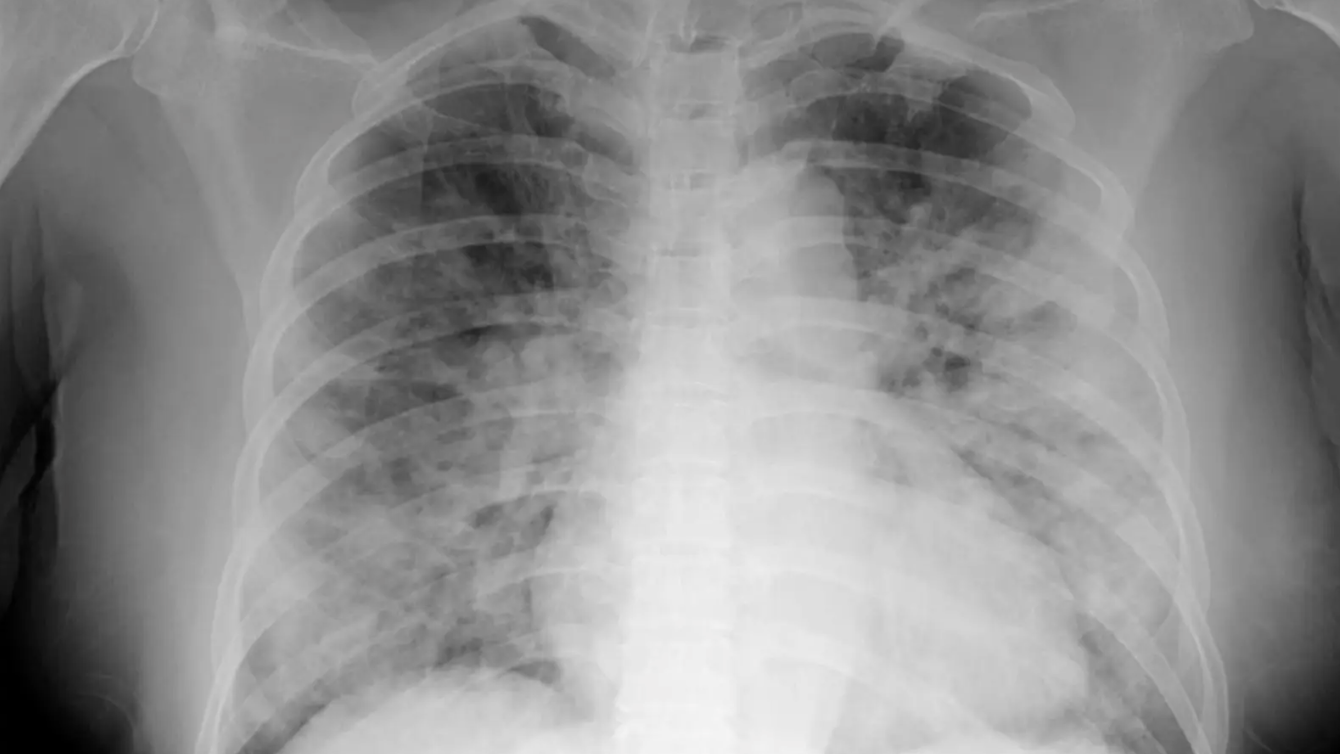(MedPageToday)
39% of hospitalized Wuhan patients had persistent interstitial lung abnormalities, study finds
Two years after hospitalization for severe COVID-19 illness, more than a third of patients from the pandemic’s early days had lingering pulmonary abnormalities on chest CT scans, according to a prospective study from Wuhan, China. (link to paper)
The incidence of persistent interstitial lung abnormalities (ILAs) fell over follow-up after hospital discharge from Wuhan Jinyintan Hospital, dropping from 54% at 6 months and 42% at 1 year to 39% at 2 years (P=0.001) in a cohort of 144 individuals, reported Heshui Shi, MD, PhD, of Huazhong University of Science and Technology in Wuhan, and coauthors.
Notably, the proportion of non-fibrotic ILAs decreased from 31% to 19% to 16% over the course of the study, while the incidence of fibrotic ILA stayed at a consistent 23%, the authors showed in a study published in Radiology.
“In particular, the proportion of fibrotic interstitial lung abnormalities, an important precursor to idiopathic pulmonary fibrosis, remained stable throughout follow-up,” Shi’s group said in a press release. “Therefore, the fibrotic abnormalities observed in our study might represent a stable, irreversible pulmonary condition, such as lung fibrosis, after COVID-19.”
Residual lung abnormalities after COVID may consist of ground-glass opacities, subpleural reticulations, cystic changes, traction bronchiectasis, honeycombing, or parenchymal bands or architectural distortion.
“These features fit the imaging definition of ILAs, which are potentially compatible with interstitial lung disease. Clinically, ILAs, especially the subpleural fibrotic subtype, are associated with radiographic progression, higher mortality, and the need for medical intervention,” the authors wrote.
Shi and colleagues reported that patients with persistent ILAs experienced more diffusion capacity of the lung for carbon monoxide (DLCO) compared with patients who showed radiological resolution (43% vs 20%, P=0.004). Respiratory symptoms like exertional dyspnea and cough were also more likely to linger with ILAs (34% vs 15%, P=0.007).
Between the two types of ILAs, fibrotic ILAs were associated with more DLCO impairments (60% vs 22%, P=0.005) and continued respiratory symptoms (45% vs 17%, P=0.03) at 2 years.
Although most patients in this Wuhan cohort had severe COVID-19 infection, the present findings “should fill us with hope to be able to live with COVID-19 in the future,” according to Edwin van Beek, MD, PhD, of the University of Edinburgh in Scotland, writing in an accompanying editorial “As we now know, the vast majority of patients with COVID-19 will have mild to moderate symptoms or recover well following severe COVID-19,” he wrote. “Thus, the fact that so few of the many patients with COVID-19 have persistent abnormalities should provide us with confidence.”
Even so, roughly a quarter of the cohort remained symptomatic at 2 years, and “the sheer number of patients affected still means that this will continue to remain a significant burden on healthcare and society at large,” van Beek said.
The Wuhan study enrolled 144 adults, with an average age of 60, who had been discharged from COVID-19 hospitalization from January 15 to March 10, 2020.
In order to qualify for the study, patients could not have already achieved complete resolution of lung abnormalities at discharge, and they needed to have chest CT scans on file when they were admitted for treatment.
Nearly half of participants had at least one comorbidity. Alcohol use and smoking history were reported in 22% and 17%, respectively.
Pulmonary function testing was provided to 129 patients.
The study was limited by analyzing only people infected with the initial strain of SARS-CoV-2. The study also lacked pre-infection data from pulmonary function tests and CT scans.
